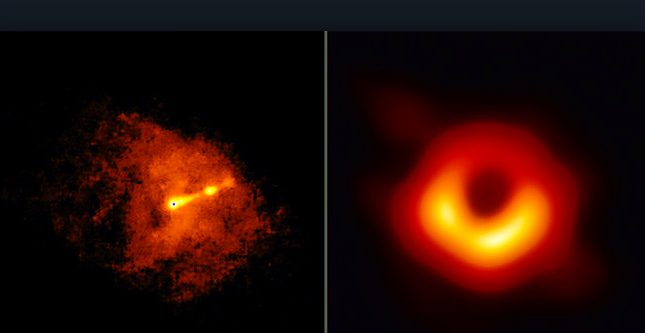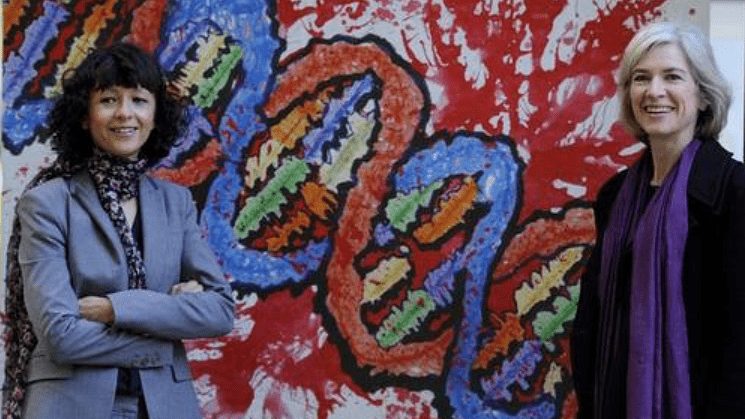Astronomers on Wednesday released the first ever photo of a black hole the mysterious dying stage of a heavyweight star with such a huge gravity that even light, the fastest runner in the Universe can’t escape its pull, making it literally black.
Four images of the black hole were released by the scientists as a part of six scientific papers. All of them show a central dark region surrounded by a ring of light that appears lopsided- brighter on one side than the other.
The existence of such cosmic monsters that devour everything was first predicted by Albert Einstein’s General Theory of Relativity in 1915, but so far none was ever observed directly in the absence of light.
Their presence at the core of numerous galaxies was established through mathematical calculations, but it was left to the artists to portray these celestial giants using their power of imagination. Well, till now.
An international team of more than 200 scientists used a network of eight sophisticated ground-based radio telescopes around the world to create an Earth-sized virtual observatory named Event Horizon Telescope (EHT) that captured the image of a super-massive black hole located at the centre of the Messier 87, a galaxy within the Virgo galaxy cluster, about 55 million light years from Earth. Named M87 Star, the black hole has a mass of 6.5 billion times that of the Sun.
The discovery has a distant India connection too. “All the EHT telescopes operated in a frequency range (millimetre wave) first discovered by Jagadish Chandra Bose in 19th centurty and demonstrated at London in 1897,” Somak Raychaudhury, director of Inter University Centre for Astronomy and Astrophysics, Pune .
So, how the black hole was photographed if there was no light? The scientists said they actually photographed the “shadow” of the black hole using radio waves.
Anything that comes within a black hole’s “event horizon,” its point of no return, will be consumed, never to re-emerge, because of the black hole’s unimaginably strong gravity. By its very nature, a black hole can’t be seen, but the hot disk of material that encircles it shines bright. Against a bright backdrop, such as this disk, a black hole appears to cast a shadow.
“If immersed in a bright region, like a disc of glowing gas, we expect a black hole to create a dark region similar to a shadow – something predicted by Einstein’s general relativity that we’ve never seen before,” Heino Falcke, a professor at the Radboud University, the Netherlands and chair of the EHT Science Council explained at a press conference in Brussels.
“This shadow, caused by the gravitational bending and capture of light by the event horizon, reveals a lot about the nature of these fascinating objects and allowed us to measure the enormous mass of M87’s black hole,” he said.
The scientists are working to capture the image of another black hole named Sagittarius A Star. “But it would take some more time because Sagittarius A Star is 1000 times faster and smaller. Its like a toddler who is moving constantly.
In comparison, M87 is much slower, like a big bear,” he said.
The telescopes are located at sites as diverse as volcanoes in Hawaii and Mexico, mountains in Arizona and the Spanish Sierra Nevada, the Chilean Atacama Desert, and Antarctica. The EHT observations use a technique called very-long-baseline interferometry to synchronise the telescopes around the world.









